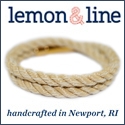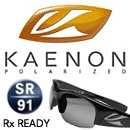
|
|
|
Scuttlebutt News: Conversations within the sport of sailing - Justin Scott It is often said how sailing is unique as a sport, where the opportunity is readiliy available to compete against the very best in the sport. Occassionally we get the chance to chat with them too. (April 22, 2009) Last year the Viper 640 circuit included Charleston Race Week for the first time. They had such a good time that they promised to spread the word and bring back their friends. Did they ever! Last weekend, 32 Vipers showed up on the start line at Charleston making the Viper 640 the largest class at the regatta. Charleston Race Week is fast becoming a Mecca for smaller sport boat racing on the East coast, with the combined fleets of sport boats under 26 feet accounting for over half of the 162 participants. Race Week organizers view the 20-foot sport boat category as one of the fastest growing and most exciting niches in sailboat racing so they put the Viper fleet, the 6 boat Laser SB3 fleet and the 6 boat Melges 20 fleet together on circle one and the PRO called it “The Roaring Twenties Line”. Scuttlebutt caught up with Justin Scott, Viper 640 Class Association president for an update on the Roaring Twenties and the Viper 640 Class.
Most of all, the hospitality of the people who run this regatta, and the attitude of the Race Committee is unsurpassed. Race Director Randy Dratz was unbelievably generous to the Viper class, lending us his boat yard to assemble our Vipers. Meghan and Brad Van Liew were always there to answer questions. Danny Havens organized logistics. Priscilla Parker was the RC’s point person for the Viper class. Hal and Sally Smith were our cheerful PROs on the Roaring Twenties line. These folks really know how to roll out the welcome mat. The bottom line is that last year a handful of us attended Charleston to see what it was all about. We had such a great time; we went back to our local fleets and said “You got to come to this one”. The other factor, of course is that the Viper class has been growing like a weed over the past two years. We have gone from less than 20 active boats when we formed the Class Association a couple of years back to over 110 boats in North America today. Over half of the competitors at Charleston have bought their Viper in the last year. In fact, six of the Vipers were delivered to their new owners at Charleston in the week before the regatta. Justin Scott: Great decision by the Race Week organizers. It was fun. I am a huge advocate of the 20-foot sport boat category. I think these boats can reinvigorate keel boat racing in North America. Obviously I love my Viper but I want to see the other classes and make friends in their fleets. In addition to one-design racing, these boats would be great on the same course racing under Portsmouth handicap ratings. More boats equals more fun. The differences? To some extent they fish from the same pond. I don’t think there was a boat out there where the crews did not have ear to ear grins on Friday in the big breeze. These boats are going to appeal to both the young and the young at heart. They are all putting fun and excitement back into racing keel boats. They all have asyms and plane downwind. There are some different philosophies behind the designs and the classes. Both the Laser and the Melges have adopted a “No-Hiking” philosophy. We like to think of the Viper as mildly athletic. We advocate legs in hiking and the design makes the hiking incredibly comfortable. We want to appeal to all ages. We have lots of younger owners but the winner of the Viper class at Charleston was in his fifties. I’m 52, our oldest skipper at the NAs was over 70 and he finished half way up the fleet. Our youngest skipper was 16 and finished within 2 points of our oldest skipper. We like that message very much. At Charleston, the Vipers started 5 minutes behind the Melges and the Lasers, who started together. The Viper is a clearly faster boat because it is lighter and has a hull with high form stability allowing a greater power to weight ratio. We closed that 5 minute gap and caught up with the other classes. The Melges and the Laser were reasonably evenly matched at Charleston with the Melges having an edge downwind. I’m not sure that there is much to be gained from that information because the feel and behavior of the boat is more important than absolute boat speed. I always recommend that folks try the different boats and make up their own minds. In my heart I know that the 20-foot sport boat category needs more than one class to attract the widest possible spectrum of sailors. I am passionate about the category so you will see me personally support any class and event, no matter which boat somebody decides to buy.
Justin Scott: The Class had no builder in 2004. The Viper had won Boat of the Year award from Sailing World in 1997 but had ceased production in 1999. In January 2005, over cocktails and fried clams in the upstairs bar at Maddys Sail Loft in Marblehead, we decided that the Viper was an ideal boat to reinvigorate our local sailing scene. We formed a Class Association, spoke to a half dozen builders, including all the obvious US builders but settled on Rondar Raceboats, a high tech builder of super fast smaller race boats based in the UK. Paul Young the owner of Rondar loved the boat and he liked the grass roots concept of growing the class. Paul agreed to start building Vipers again with class controlled molds on the basis that prospective owners could buy a boat at a builder’s wholesale price directly from the builder. The term "Vipernomics" was born. The first demo Rondar boat arrived for testing in the fall of 2006 and the first new Rondar Vipers were sold to class members in 2007. Initially, we ordered our new boats from the UK and each owner would go to the docks to pick up his or her own boat when it cleared customs. As the Viper fleet grew, Rondar decided to open a North American sales and service operation. They persuaded Brian Bennett, the original Viper designer, to return from New Zealand and run Rondar NA based out of Hampton, VA. The boats are still delivered to the nearest port but Rondar will take the boat from customs and prep it so it is ready to go on the trailer. Recently, Rondar appointed a West Coast agent, Spinnaker Sailing run by Drew Harper to provide the same sales and service operation on the West coast. Justin Scott: There will be over 40 Vipers at the NAs on Long Island Sound this year, up from 26 last year, up from 18 the year before. We are confident that there will be 50 Vipers on a start line somewhere in North America some time in the next year. We haven’t decided where the 2010 NAs will be held. Frankly so many new fleets are springing up and the possible locations are growing that we want to wait until later in the year to consider this. The South East certainly has a very strong claim and we are thrilled to see the new Biscayne Bay fleet gain traction in Miami. back to top |







|



